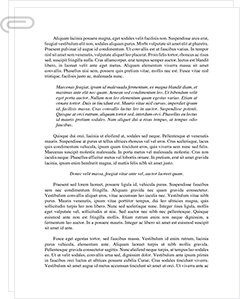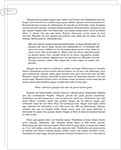 Study Document
Study Document
Experimental Vs. Quasi-Experimental Research Evaluating Research Paper
Pages:2 (569 words)
Sources:4
Document Type:Research Paper
Document:#3270639
Trochim (2006) states that a quasi-experimental design is one that looks a bit like an experimental design but lacks the key ingredient -- random assignment. He notes that his mentor [Don Campbell] used to refer to quasi-experiments as "queasy" (2006) experiments because they give the experimental purists a queasy feeling.
With respect to internal validity, they often appear to be inferior to randomized experiments. But there is something compelling about these designs; taken as a group, they are easily more frequently implemented than their randomized cousins (Trochim 2006).
The most important part of both experimental and quasi-experimental research is the measure of the dependent variable, which it allows for comparison. Some types of data are very straightforward, but there are other measures, but there are other types of data that are completely subjective. In cases where the data is highly subjective, the quasi-experiment will have to have various strategies to compare subjectivity.
It is important to note that though experimental research is the standard that all other research strategies are typically judged, there are still weaknesses in experimental research. For example, efficacy and accuracy are a debatable subject when it comes to experimental research because many believe that real-life environments are difficult to be reduced to a small set of treatment and outcome variables because they are simply much too complex. There are also some ethical concerns that have become controversial; many treatments are applied without subjects' knowledge. Quasi-experimental research design, on the other hand, is often used in settings where people or groups cannot be randomly assigned for ethical reasons.
Reference:
Trochim, William K. & Donnelly,…
Sample Source(s) Used
Reference:
Trochim, William K. & Donnelly, James P. (2006). The research methods knowledge base. Thomson Custom Publishing.
Related Documents
 Study Document
Study Document
Experimental Research Methods in Business Experimental Research
Experimental Research Methods in Business Experimental Research Methods The author provides a survey of the literature illustrating applied experimental research methods in cross-sections of business and organization types. The advantages and disadvantages of the experimental research methods are discussed for each of the examples provided which run the gamut from depression-era agricultural economics to research conducted for the National Science Institute. While the article focuses on business research methods, the range of
 Study Document
Study Document
Experimental and Quasi-Experimental Research Is Imperative to
Experimental and Quasi-Experimental Research Research is imperative to quality analysis and development of theories. In any science, no matter if it is a physical, psychological, or sociological, research is integral to formulation of working theories. Without research, not only can problems not be solved but problems cannot even be properly determined. Having said that, it is important to understand that there are many different types of research methodology. Not all forms
 Study Document
Study Document
Experimental Designs
Experimentation is one of the common methods used in quantitative research. Premised on the positivist philosophy, an experiment is essentially conducted to investigate causal relationships between variables (Bryman, 2008). Indeed, this is one of the major strengths of experimental research compared to other types of studies -- it not only describes association between variables, but also explains causation between variables (Kothari, 2004). This essay describes the various components of an
 Study Document
Study Document
Research Proposal on Smoking Cessation
MEDICAL AND HEALTHCARE Medical and Healthcare: Research Proposal (Smoking Cessation)MethodologyExtraneous VariablesThe extraneous variables within the currently proposed quasi-experimental research study are age, sex, weight, mental health, or previous health conditions. The plan for controlling them would be selecting the sample participants within a certain age bracket, for example, 40-50 years old. A normal balanced weight for the mentioned age group is 176.4 pounds since the primary concern for quitting smoking
 Study Document
Study Document
Evaluating Design Choice and Threats to Validity in a Quasi-Experimental Design...
Threats to Validity in a Quasi-Experimental Design Evaluating design choice: Walk Texas! The research study by Bartholomew (et al. 2008) entitled "Walk Texas! 5-A-Day intervention for women, infant, and children (WIC) clients: A quasi-experimental study" is defined as quasi-experimental because it lacks a formal control group. The purpose of the study was to determine an intervention designed to improve the eating habits of low-income WIC clients. The participants were "primarily native
 Study Document
Study Document
Research Methods and Design in Criminal Justice
Both qualitative and quantitative research methods have the potential to yield reliable, valid, and important information that can be used to inform public policy. Criminal justice researchers use a wide range of research methods, which vary depending on the research questions, the purpose of the study (applied versus pure research) and the overall paradigm and theoretical framework. Research can be used to validate or disprove an existing theory, alter or



